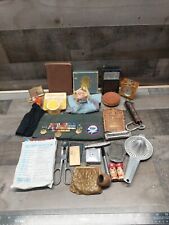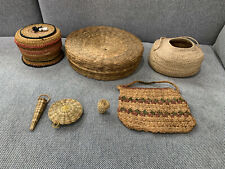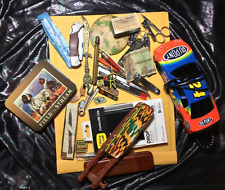unknown item burmite Myanmar Burma natural Amber insect fossil from dinosaur era For Sale

When you click on links to various merchants on this site and make a purchase, this can result in this site earning a commission. Affiliate programs and affiliations include, but are not limited to, the eBay Partner Network.
unknown item burmite Myanmar Burma natural Amber insect fossil from dinosaur era:
$1.50
Size:17.7/10.6/3.1mmWeight:0.35gBecause I really don\'t know the price in your country,so I send them insale,you decide the price of them,allsale‘s end price are lower than the wholesale price now,save my shop please,I will send the more rare items insale in the future,come I just want to sell them as soon as possible,for food anddiesel oil and dig moreburmite foreverybody.All amber specimens sold here are100% authentic and all-natural. We do not sell any treated amber (heated, reconstituted, colour enhanced, or whatever else). We promise thatyou will get full money back including shipping fee at ANY TIMEif it is not the case.
About us
I am a ethnic Chinese in Burma,a miner ofburmite,and also do theburmitebusiness for 4 years,I am major in theburmite insect amber,almost have handled and sold every kind of the insect of burmite,if you interested in any kind of it,you can leave message to tell me,I am not good at keep items,I like sell item as soon as possible with low profit,if you ask me why,the reason is easy,because theminers and me all need eat,but the amber cannot beeneaten -_-||I cannot keep them too long.
I am not good at English,cannot understand many words,and we also poor in use computer,I am aso a new seller in .so reply your request and message will little late.
I am not good atdistinguish thespecies of insect,so have some mistake in the title of list usually,and need the help ofprofessional person,if I have some mistake in it,leave message to tell me please.
The items isdigged by us or the miners nearby,sellburmiteoutfor money and food,the price isnegotiable,low profit is OK but loss money is not OK,thank you.
About burmite Myanmar(Burma) amberThe History ofburmiteBurmite comes from northern Myanmar (formerly Burma) and the neighbouring countries; it has been mined, as an artistic material, since the time of the Chinese Han dynasty (ca. 200years BCE). The Chinese called it hu-pe and believed it to contain the soul of a tiger. It was considered a symbol of courage and valour. Over the centuries, the Chinese had a trade monopoly on Burmese amber, it was even referred to as “Chinese amber.” In 1613, the Portuguese Jesuit Alvarez Semedo was the first European to write about the Burmese amber mines but in the later years there were no further accounts about them. The situation changed significantly after the Anglo-Burmese Wars (1826-1885) and Burma’s incorporation into British India, which is how an interest in the new kind of fossil resin arose in Europe. In 1835, Britain’s Captain Hannay was the first to obtain a permit from the local authorities to visit amber mines in Burma and a year later he described his experiences. But the knowledge about Burmese amber began to flourish owing to the German researcher Fritz Noetling. It was he that described in 1892 how it was mined by means of wooden hoes and bamboo baskets and gave samples from the town of Maingkwan to the Gdańsk-based pharmacist Otto Helm. Based on his research, Helm found this amber to be different from others that he was familiar with and was the first to call it burmite (1894). Noetling also brought burmite products to Europe (for example earplugs, beads, religious figurines). A heated discussion about the age of burmite began in the early 20th century. Based on insect studies, in 1917 T.D.T. Cockerell (see Poinar at al. 2008) was the first to suggest that it was a Cretaceous resin although other researchers claimed the Tertiary age of the burmite-bearing rock. Due to the domestic unrest, burmite mines were closed down in 1936. This situation had continued for more than 60 years until 1999, when due to the gradual political change the amber mines were reopened. Initially, they were available only to US and Canadian companies but after the economic sanctions were lifted they also became accessible to international amber researchers and for commercial mining. As a result, the 21st century has brought flourishing research on burmite and a considerable increase in its production. The most interesting discoveries from this period include those made by Lambert and Wu (see Poinar et al. 2008), who designated burmite-’s parent tree as the araucaria in 2002, while Tappert at al. (2013) described Cupressaceae as its botanical source (see Vávra 2015) and Cruickshank and Ko’s research (2003) confirmed Crockerell’s thesis about its Cretaceous origin. Intensified research on Burmese amber is yielding surprising discoveries, for example the finding of the oldest grass fossil or multiple animal inclusions. IR absorption spectroscopy tests have demonstrated that burmite yields the spectrum of romanite. Outside of Romania and Burma, romanite can also be found for example in Turkey and Sakhalin (Kosmowska-Ceranowicz 2015). Mining Burmite mining is associated mainly with the Hukawang Valley, Kachin Province. The region’s best-known mines include: Maingkwan, the largest mine from the colonial times, as well as Tanai and Noije Bum. Another well-known mine is Inzutzut located 90 km east towards the border with China. Last year, however, a new mining location was reported: Hti Lin, Magway Province. An international team of scientists with Arunas Kleismantas (2015) from Vilnius University reports that about 100 miners (mainly farmers) produce amber from 20-30 shafts across an area of ca. 10 km². His studies of IR spectra show unequivocally that samples from the Magway Province mine correspond to the samples from the Kachin ProvinceMines ofburmiteknown to date. This gives us hope that present-day Myanmar (Burma) has more as-yet undiscovered burmite deposits. The beauty of burmite Burmite is a resin which, together with the sediments in which it ended up, had been altered in the mountain range uplift processes under the influence of increased pressure and temperature. That is why, despite being harder than succinite, in general it is highly cracked internally. This is where the reason for using pressed burmite in China may have come from (Kosmowska-Ceranowicz 2012). Natural burmite figurines, just as pressed burmite beads, have similar features to succinite: they are easily workable and durable. On polished surfaces of the yellow varieties, the weathering process first shows only through a change in colour which, affected by the air, light and changes in humidity, darkens to become red and shades of brown. Summary ofburmiteIf we compare the hardness of burmite (2,5-3) with the hardness of succinite (2-3), which noticeably influences the degree of its workability, a wide range of naturally occurring burmite colours (from yellow, almost transparent to deep red) and the relatively lower price, at least for the time being, competition with succinite seems to be a given. We also need to remember that burmite has strong cultural and historical roots in the Chinese market and even today indirectly meets the demands of the Eastern markets.
Related Items:
Vintage Junk Drawer Lot Miscellaneous Items
$89.97
Unknown Age Lot of 7 Basket Weave Woven Items Baskets Miniatures Vase Purse
$115.00
Assorted Stuffffff Collectible Items Lot, new old Read description
$52.00



